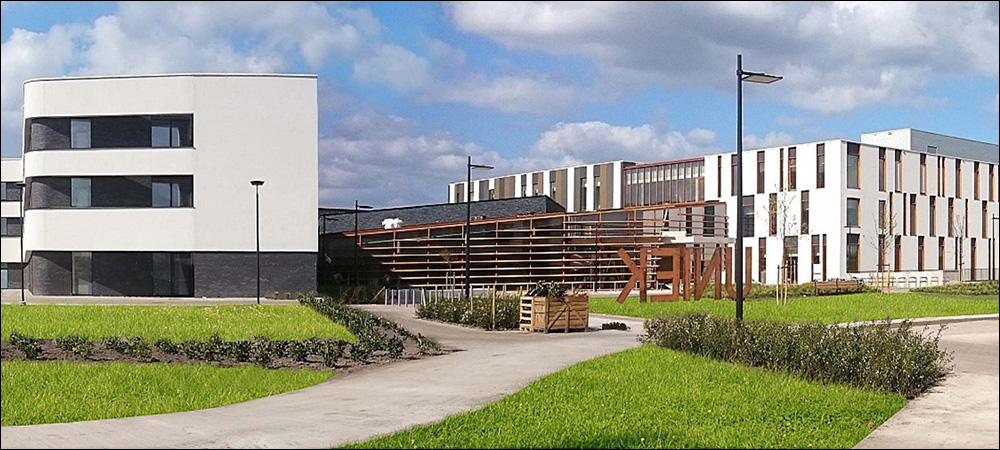Several years after launching an RFID-based solution to manage its medical supplies, Ziekenhuis Oost-Limburg Hospital (ZOL) is now planning to integrate the solution into its own enterprise resource planning (ERP) system to make replenishment orders and inventory management more seamless. Since the UHF RFID system, provided by Aucxis, was taken live, the Belgian hospital reports that it has enabled faster picking of supplies at its multiple decentralized warehouses around the facility.
The system decreases the risk of errors, says Zeff Cosemans, a ZOL staff member, since supply orders are now processed automatically, and it also eliminates the need for manual counting. Located in Limburg, Belgium, ZOL operates a campus of five buildings with a total capacity of 226 beds. It has numerous storage areas within those structures in which healthcare providers can access supplies. It has used a kanban method of reordering supplies as stock counts require, but the system used was traditionally manual.
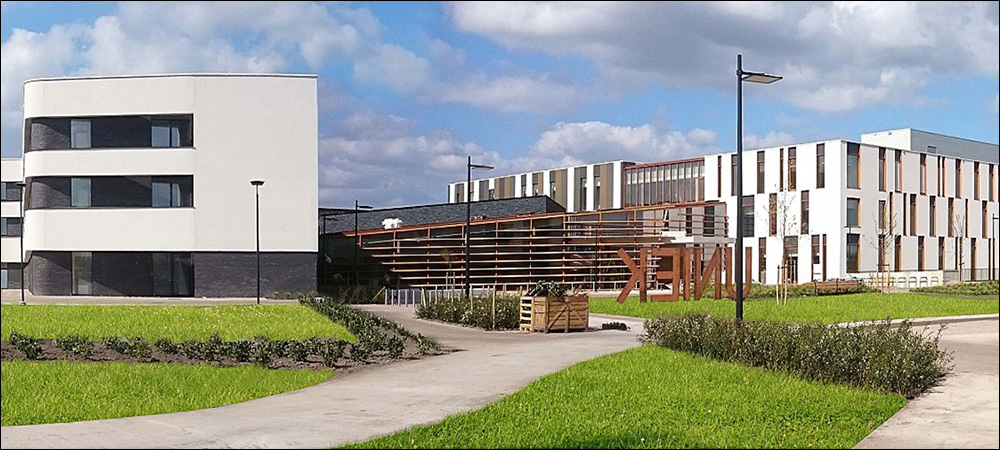
Prior to the RFID solution’s deployment, counts were undertaken several times a week by a logistics employee or a nurse. Workers would check the entire stock within a storage area, Cosemans explains, and indicate on a printed list which items and quantities had to be ordered. That list was then physically delivered to the central warehouse, where operators used it to pick replacement goods.
This system posed several challenges for the hospital, Cosemans reports. “First,” he says, “when a human factor is involved, there are also human errors.” Items were often forgotten, for example. Additionally, the work was labor-intensive and time-consuming, and it drew personnel away from other tasks. Pressures related to the COVID-19 pandemic further illustrated the importance of saving manual labor, he adds, since with more absenteeism, “All hands were more than needed on the work floor.”
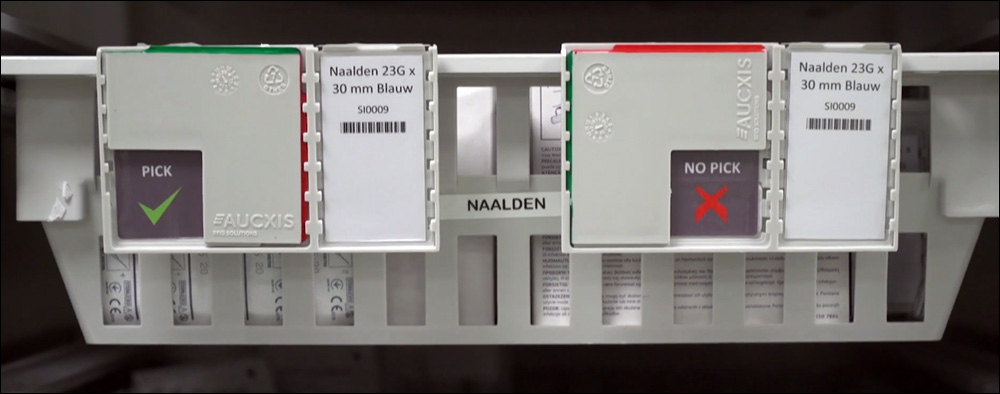
With restocking process automated, Cosemans reports, these tasks have now been removed. The hospital began working with Aucxis on the RFID-based solution in September 2017. The companies determined that RFID tags attached to boxes and readers in the storage areas would help automated the kanban system. One of the greatest challenges facing the use of RFID, he recalls, involved the wide variety of materials that needed to be tracked, including medical products and goods containing metals or fluids. It took approximately a year to optimize and refine the solution before it was fully operational.
The deployment consists of RFID readers installed in the storage areas of 14 departments. These readers can capture tag reads on 250 shelves or cabinets, even if the tags are located inside locked cabinets. RFID tags are applied to ticket holders on boxes that store the products, while the reader antennas are mounted on the ceiling. In total, more than 8,000 items have been tagged to date, with 20 readers and 80 antennas installed on the ceiling. Each tag read is captured by Aucxis’s HERTZ middleware and is forwarded to the hospital’s ERP software.
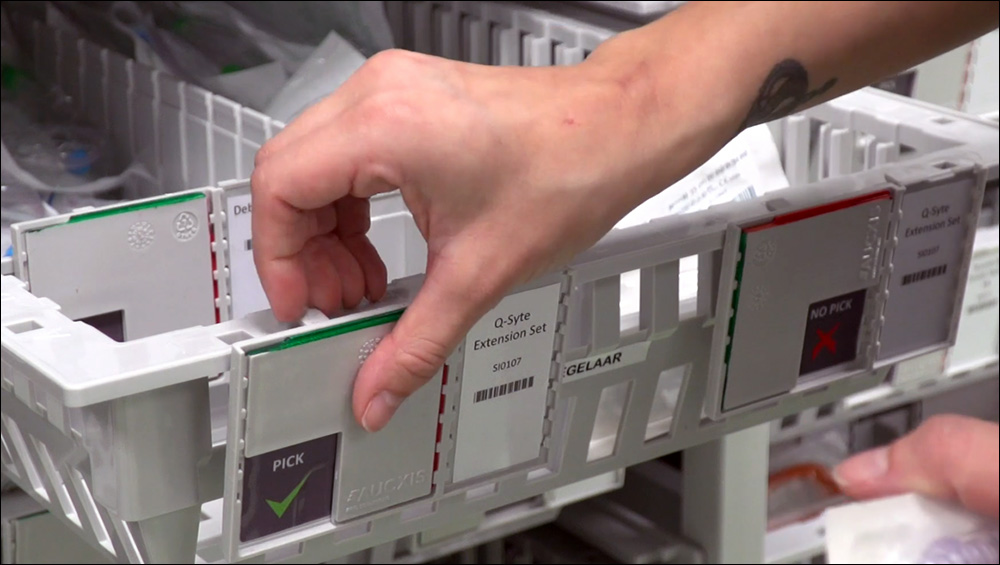
Tags are attached to supply boxes by being placed in specialized empty/full ticket holders, according to Patrick Catthoor, Aucxis’s senior account manager and business consultant. These ticket holders can be reused indefinitely, he notes. First, a ticket is placed in the holder with a cover plate when a box is fully furnished. As goods are used or added, staff members shift the cover plate to enable RFID transmission of the new status, such as “pick,” “no pick,” or “requiring re-order.” They turn the RFID-enabled ticket so that its transmission will no longer be blocked by the holder, and it can then respond to interrogations from readers in the vicinity. Once the software receives that data, it changes the stock’s status to “order.”
Every 20 minutes, the readers interrogate the entire room, with the results forwarded to the server. The collected data is stored and forwarded to the inventory-management system in the hospital’s ERP software. When an order for a particular department is to be prepared, personnel in the hospital’s central warehouse simply access data about that department and view which orders have been placed.
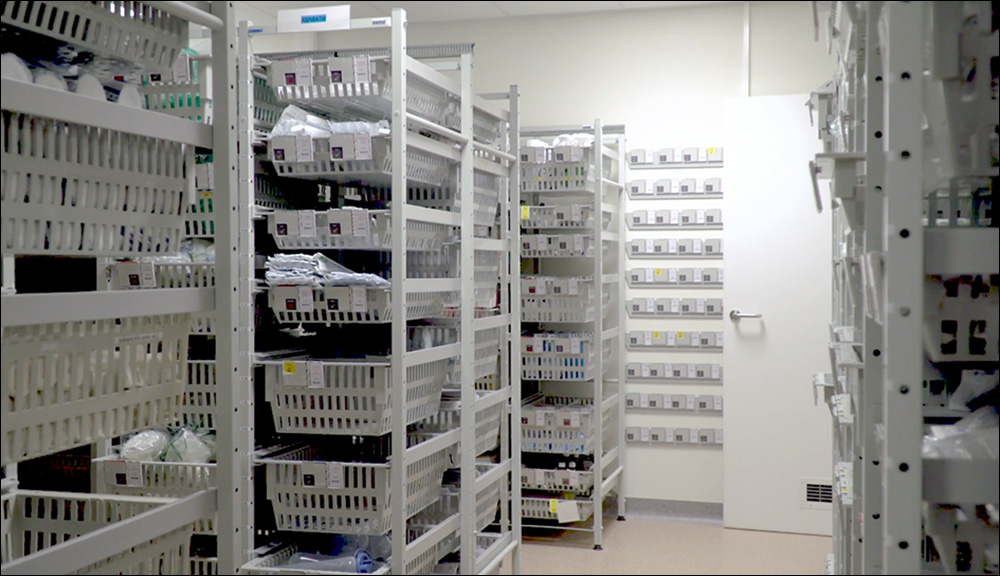
The system can generate a pick list in the order of the walking route within the central warehouse. This ensures that the picking process at the central warehouse runs more efficiently, Cosemans explains. Some of the goods being tracked include sterile and non-sterile medical materials, such as suture materials and compresses; laboratory goods, like blood tubes and needles; food and drinks; and even office supplies, such as pens, paper and business forms.
The greatest challenge for the deployment, Cosemans recalls, was having to work around the wide variety of materials. “Initially,” he says, “it was not easy to obtain an ideal scanning of all items because of the metals and liquids involved.” The RFID installation team, which included individuals from both Aucxis and ZOL, modified the system by implementing several changes, such as the use of deeper boxes for liquids, in which each RFID tag is above the liquid level. Three and a half years after the initial implementation, he says, the system still works well.
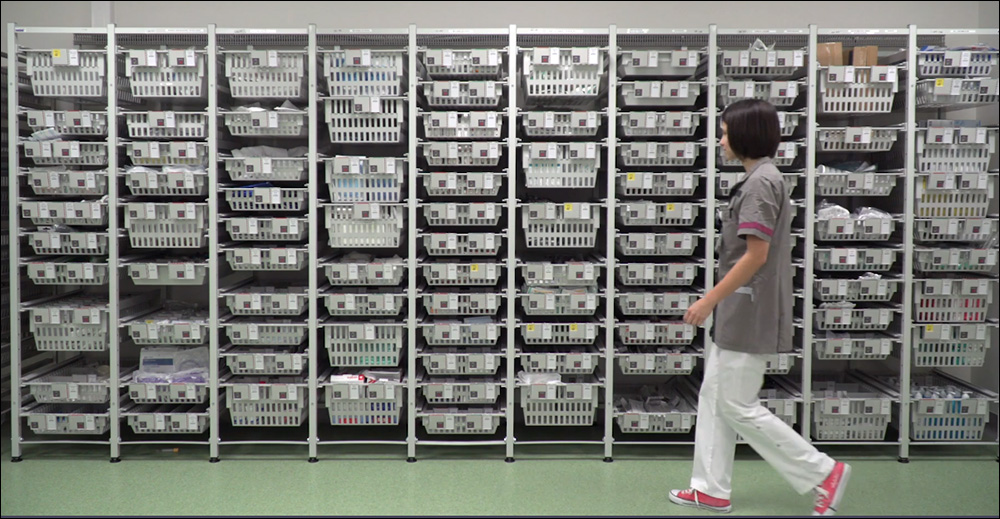
“Sometimes, minor interventions are necessary, as with most automated systems,” Cosemans states, “but this does not take away from the fact that it is an enormous added value for our hospital.” Since the technology was taken live, he reports, the hospital has achieved a drop in the amount of labor time employees spend making order lists during physical counts. The picking process at the central warehouse is now optimized based on the automated data collected from the system, and this has led to fewer stock shortages in the departments. The hospital expects to expand the technology’s use in the future as well, he adds.
“The first step we want to take is to link the system to our ERP system,” Cosemans states, “so that the stocks in the central warehouse are also automatically updated when an order is completed… We still see possibilities for expansion to new departments and, in terms of RFID, we see numerous possibilities for the future in our sector.” That could mean using the technology for the tracking and tracing of such items as sterilization sets and medical equipment as they are used, as well as potentially automating the invoicing of consumables during operations.
The HERTZ middleware can automatically provide the scheduled scanning and capturing of data on a local server, Cosemans says, though it can function in the cloud as well. The system can utilize most off-the-shelf readers, he reports, and it contains all algorithms required to translate a user’s own RFID software.

